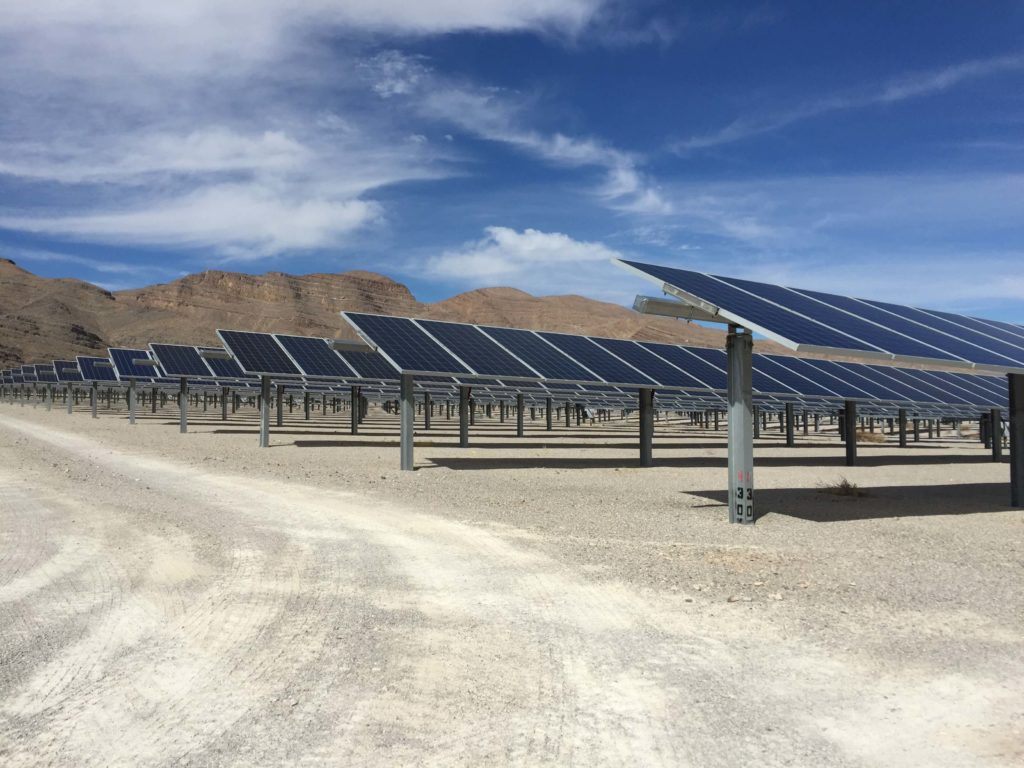EPRI Researchers Speed Up the Aging Process to Better Understand Long-Term Performance
When engineers consider the development and procurement of solar energy plants, they typically ask questions: Which solar photovoltaic (PV) modules will perform best in our climate? Which are most likely to continue producing energy well into the future? What certifications, specifications, or performance tests should be requested from module manufacturers? On what science do manufacturers determine their products’ claimed longevity?
Solar plant owners and operators seek to predict performance decades into the future, but long-term data are limited. The solar industry is still relatively young, with 90% of capacity deployed in the past seven years. In addition, module designs and components continually change. A better understanding of degradation rates can improve confidence in technology, reduce investment risk, and lower costs.
In a three-year project under the U.S. Department of Energy’s Solar Energy Technologies Office PREDICTS2 program, EPRI is studying PV module life expectancy and ways to improve predictions of degradation rates.
“Anyone with a financial stake in solar power plants is interested in greater certainty in how modules perform over time,” said EPRI Senior Technical Leader Cara Libby, who is leading the research. “Our work is aimed at developing more reliable tests for evaluating the lifespan of solar technologies, so that companies can make these investments with greater confidence.”
EPRI is examining how accelerated aging tests mimic degradation observed in PV plants that have operated for many years. This involves determining the optimal set of conditions for module testing. Dr. Michael Bolen, who manages EPRI research on solar generation, points out that many solar module test regimens are borrowed from the semiconductor industry and are effective at screening for certain failures in the first few years of a module’s expected 20-plus year life. They are not effective at predicting life expectancy.
At the Southeastern Solar Research Center, researchers subjected module batches to standard accelerated aging tests listed in International Electrotechnical Commission (IEC) 61215 and Qualification Plus, which include various temperature and humidity cycling protocols. The IEC batch exhibited no decrease in power output. In contrast, modules at a commercial solar power plant under observation experienced a 5% decrease in power over five years. The Qualification Plus batch exhibited a reduction similar to what is typically observed at commercial plants after a few years of outdoor exposure.

Based on these accelerated tests, modeling, and performance measurements at other plants, researchers seek to develop calculations for estimating module degradation rates in any climate as a function of exposure to environmental stressors.
“We are trying to better understand how specific stressors lead to degradation,” said Libby. “This can help us define better tests for predicting susceptibility to failures from year 4 to year 30 of a module’s life.”
“New PV modules and other innovations in solar technology enter the market on a regular basis. It is impractical to wait for 20 years of field observations to accurately gauge life expectancy and degradation rates,” said Dr. Bolen. “Improved accelerated aging tests are one of many emerging techniques to bolster confidence in new technologies.”
The research also may help answer this ongoing question for the solar industry: Do modules degrade at a steady rate over their life, or do various aspects of degradation compound to accelerate degradation?
EPRI is considering additional accelerated aging research on modules from several manufacturers, in different climates, and from power plants of various ages. EPRI also is preparing a report to help solar plant operators optimize maintenance and improve techniques to identify failed or degraded modules.
This material is based upon work supported by the U.S. Department of Energy’s Office of Energy Efficiency and Renewable Energy (EERE) under Solar Energy Technologies Office (SETO) Agreement Number DE-EE0007137.
Are Cracks in Solar Cells a Big Deal?
As part of EPRI’s research under the U.S. Department of Energy’s PREDICTS2 Program, EPRI conducted electroluminescence tests on PV modules to better understand the link between module defects and power degradation. In late 2016, researchers imaged modules at an operating commercial PV plant. A year later, they imaged the same modules again, observing 20% more solar cells and modules affected by busbar defects. This surprisingly large increase warrants further investigation of root causes along with continued monitoring to assess performance impacts.

In a separate analysis, researchers took electroluminescence measurements on modules at various points during lab-based accelerated aging tests, then imaged the modules again after they were installed outdoors for further monitoring. The first set of field images had 9% more defects than the final lab images—likely attributed to handling during installation. The results demonstrate PV cells’ susceptibility to cracking and point to more research to determine whether and how the cell cracks affect the modules’ long-term safety and power.
EPRI Technical Experts:
Cara Libby, Michael Bolen


